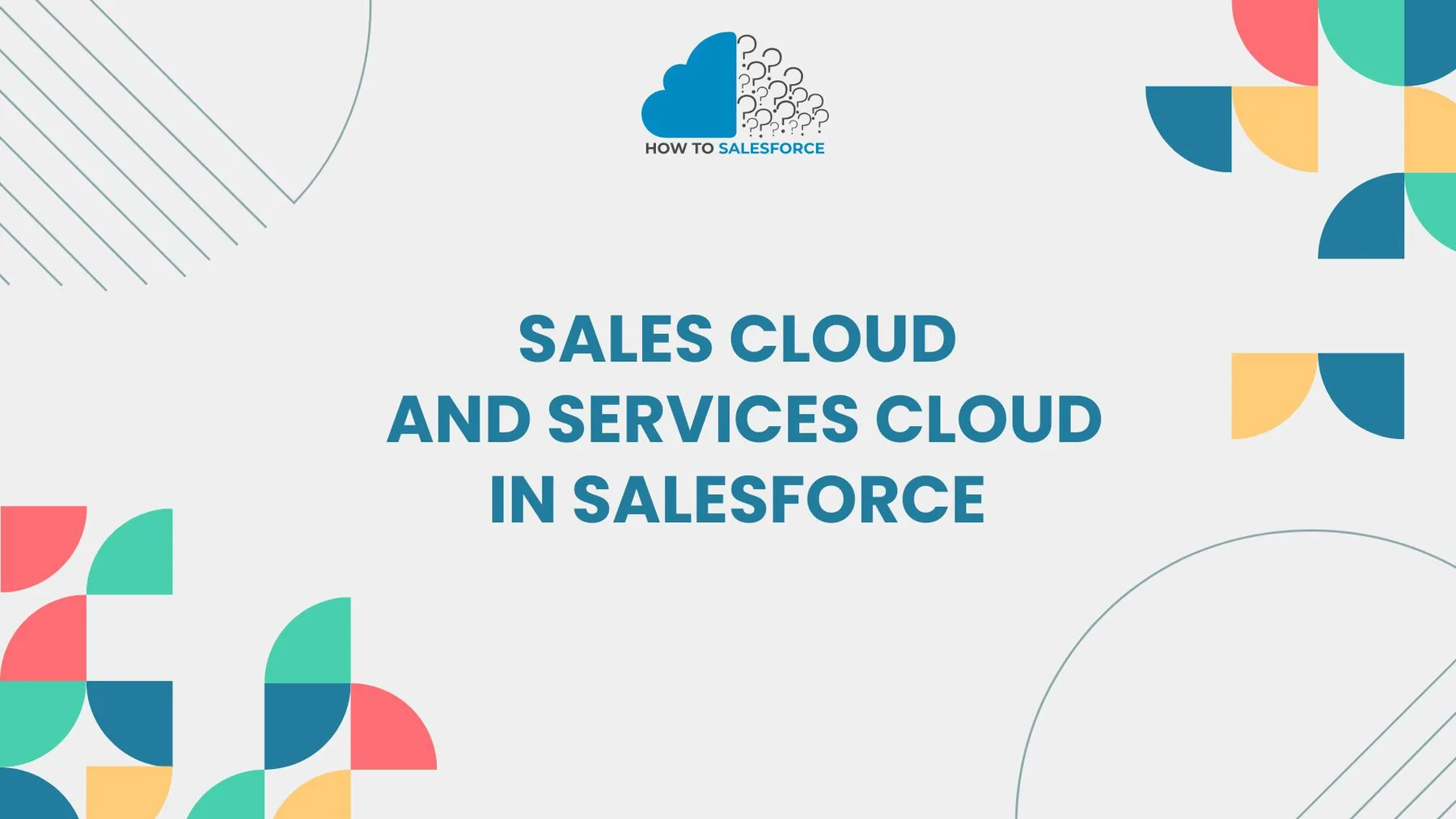Introduction
Salesforce provides strong solutions to improve company operations. Of these, Sales Cloud and Services Cloud in Salesforce are particularly noteworthy. These tools help businesses boost sales and customer satisfaction by simplifying sales, customer service, and interaction management. This blog will explore the special advantages of these two crucial platforms and how they operate.
Please read my other blog: Salesforce Tab Settings Not Showing in Permission Set
Understanding the Salesforce Sales Cloud
Firstly, with an emphasis on managing leads, opportunities, accounts, and sales pipelines, Sales Cloud was created especially for sales teams. It provides crucial resources that enable sales teams to effectively close deals.
Key Features of Sales Cloud
Sales Cloud has a lot of features that help with lead generation and closing deals. Its primary tools are broken down as follows:
Lead Management
Sales Cloud facilitates efficient lead tracking, management, and nurturing. Sales representatives can streamline the sales process by using this tool to turn qualified leads into opportunities.
Opportunity Management
Sales teams can oversee the sales pipeline with the help of this feature. Sales representatives can keep tabs on the status, size, and progress of each deal, concentrating on high-potential prospects.
Account and Contact Management
Sales representatives have central access to comprehensive customer data. By keeping representatives up to date on each customer’s preferences, this tool enhances engagement.
Sales Forecasting
Sales Cloud enables managers to forecast sales revenue with precision. This feature facilitates goal-setting and strategic decision-making.
Reports and Dashboards
Sales Cloud’s reporting features provide information about sales activity. Dashboards give teams a visual summary, facilitating speedy analysis of performance indicators.
Advantages of Using Sales Cloud
Moreover, Sales Cloud offers quantifiable advantages that have a direct effect on company expansion. Here are some main benefits:
Increased Sales Efficiency
By automating tedious tasks, Sales Cloud frees up representatives to concentrate on closing deals. Time is saved by this automation, which boosts sales output.
Better Lead Conversion Rates
Sales Cloud increases conversion rates through the use of targeted campaigns to nurture leads. By identifying potential clients, the lead management feature makes sure sales teams give priority to high-value leads.
Enhanced Sales Forecast Accuracy
Sales managers can set reasonable objectives and create successful plans with the help of thorough forecasting. Forecasting tools are also useful for identifying patterns in consumer purchasing patterns.
Improved Customer Relationships
Customer data is centralized by Sales Cloud’s account management tools. Sales representatives cultivate enduring relationships with customers by monitoring interactions and preferences.
Understanding the Salesforce Services Cloud
Moreover, Services Cloud was developed by Salesforce for customer support teams. It is very helpful for teams that are committed to customer satisfaction because it concentrates on case management, customer support, and issue resolution.
Key Features of Services Cloud
Services Cloud provides several tools for efficiently managing and resolving customer issues. Here are some of its salient features:
Case Management
Services Cloud facilitates case management, assignment, and resolution for customer support teams. Cases are forwarded to the appropriate agents, guaranteeing prompt support.
Omni-Channel Routing
This function routes consumer questions to agents according to their availability and level of experience. It increases customer satisfaction by preventing delays.
Knowledge Base
Services Cloud has a knowledge base where articles, troubleshooting manuals, and frequently asked questions can be stored. Agents and customers can use this information to resolve issues quickly.
Service Analytics
Analytics for monitoring customer service metrics are available through Services Cloud. Supervisors can assess service quality, measure response times, and observe trends.
Self-Service Portals
Self-service portals allow users to fix common problems. Customers can now find answers on their own thanks to this feature, which also lessens the workload of agents.
Benefits of Implementing Services Cloud
Additionally, services Cloud improves customer service directly. Listed below are some of its main advantages:
Faster Issue Resolution
The case management features offered by Services Cloud make the ticketing process more efficient. Effective case routing enables agents to promptly address problems.
Higher Customer Satisfaction
Omni-Channel Routing provides prompt assistance to clients. Customer satisfaction and trust are increased by prompt responses.
Reduced Support Costs
There are fewer questions thanks to knowledge bases and self-service portals. Support expenses are reduced because customers can solve problems on their own.
Improved Agent Productivity
By automating repetitive tasks, Services Cloud empowers agents to tackle intricate problems. Concentrating on high-impact cases helps agents become more productive.
Comparing Sales Cloud and Services Cloud in Salesforce
Furthermore, Despite optimizing Salesforce features, the two products have different uses. While Services Cloud improves customer support, Sales Cloud concentrates on sales. Support teams depend on case management and service analytics, while sales teams use tools like lead management and opportunity tracking. Although both clouds serve distinct teams inside a company, they can be combined to provide a smooth client experience.
Integration of Sales Cloud and Services Cloud
Customer management is strengthened when Sales Cloud and Services Cloud are combined. When combined, they provide a comprehensive picture of the customer journey, including sales and support. Integration operates as follows:
Seamless Data Transfer
Sales representatives and support staff can access pertinent information thanks to the flow of customer data between the two clouds.
Unified Customer View
Teams can better understand each customer’s history, needs, and preferences by using integration, which offers a unified view of customer interactions.
Improved Cross-Departmental Collaboration
Both groups can work together effectively to provide a flawless client experience.
How to Choose Between Sales Cloud and Services Cloud
Take your company’s needs into account when choosing between Sales Cloud and Services Cloud. Here is a brief guide:
If You Focus on Sales
If lead generation, pipeline management, and sales forecasting are important to you, Sales Cloud is the best option.
When you Prioritize Customer Support
Services Cloud is ideal for companies that prioritize customer service metrics and case management.
If You Need Both
Combining the two clouds guarantees a comprehensive strategy for support and sales.
Best Practices for Using Sales Cloud and Services Cloud
Use these best practices to get the most out of both clouds:
For Sales Cloud
Regularly Update Lead and Opportunity Data
Precise information guarantees accurate sales projections.
Use Reports and Dashboards
Examine sales data to identify patterns and establish reasonable objectives.
Nurture Leads Through Personalized Campaigns
Improved lead conversion is a result of targeted marketing.
For Services Cloud
Develop a Comprehensive Knowledge Base
A well-structured information base gives agents and consumers more leverage.
Monitor Key Performance Indicators (KPIs)
Monitor data such as customer satisfaction and response time.
Optimize Omni-Channel Routing
Reduce wait times by making sure the appropriate agents receive inquiries.
Common Challenges with Sales Cloud and Service Cloud
Even though these clouds provide reliable solutions, there may be some difficulties:
Data Silos
Without integration, data silos make collaborating difficult. Fill in the gaps by using integration tools.
Complex Setup for Large Organizations
For large teams, setting up Sales Cloud and Services Cloud requires careful planning. Clarify roles and procedures.
User Adoption
Through training, teams can be encouraged to use these tools efficiently. Introduce them to the main characteristics and recommended procedures.
Future Trends in Sales Cloud and Service Cloud
In addition, salesforce keeps improving both clouds to satisfy contemporary business requirements. The following are some expected trends:
AI-Powered Insights
Salesforce’s Einstein AI improves customer service and sales forecasting by offering predictive insights.
Enhanced Mobile Capabilities
Thanks to mobile support, sales representatives and agents can work efficiently while on the go.
Integration with External Tools
Additional external application integrations make data analysis and sharing easier.
Conclusion
To sum up, sales Cloud and Services Cloud in Salesforce provide businesses with game-changing solutions. Service Cloud improves customer support, while Sales Cloud empowers sales teams to close deals more quickly. Incorporating these tools ensures a smooth transition from lead generation to customer support, strengthening customer relationships.


